Abstract
1. The effects of the state of renal vascular tone during induction of renal artery stenosis on the subsequent systemic blood pressure and renin responses have been studied in chronically instrumented, conscious dogs. 2. In one group of dogs, renal vascular tone was altered by brief (2-3 min) renal artery infusions of ACh, saline, methoxamine or angiotensin II during narrowing of the renal artery to reduce distal pressure to 40 mmHg. The infusions were turned off 1 min later. 3. The more vasoconstricted the kidney at the time of stenosis, the slower was the restoration of distal renal artery pressure and the greater the rises in systemic blood pressure, plasma renin activity (PRA) and effective stenosis resistance. At the end of 1 hr of stenosis, the rises in systemic blood pressure were 4.3 +/- 3.3, 11.3 +/- 3.3, 28.9 +/- 3.3 and 26.3 +/- 2.8 mmHg for the ACh, saline, methoxamine and angiotensin II-infused dogs respectively; rises in PRA were 0.3 +/- 0.24, 1.18 +/- 0.42, 5.09 +/- 1.38 and 4.02 +/- 0.74 ng/ml. per hr respectively. 4. In another group of dogs a given aortic-renal artery pressure gradient was produced on two occasions: (i) with the animal conscious; (ii) under brief sodium pentobarbitone anaesthesia and preparation for surgery. After 24 hr systemic blood pressure had risen by 15.7 +/- 3.6 mmHg above initial values when stenosis was induced under anaesthesia (P < 0.05) and only by 1.2 +/- 3.6 mmHg (N.S.) when it was induced with the animal conscious. Corresponding rises in PRA were 1.29 +/- 0.42 (P < 0.05) and 0.25 +/- 0.11 (N.S.) ng/ml. per hr. Establishment of a given gradient in the high vascular resistance kidney of the anaesthetized dog thus requires greater narrowing of the renal artery than in the lower resistance renal bed of the conscious animal. 5. The tone of the renal vascular bed is a major determinant of the severity of renal artery stenosis.
Full text
PDF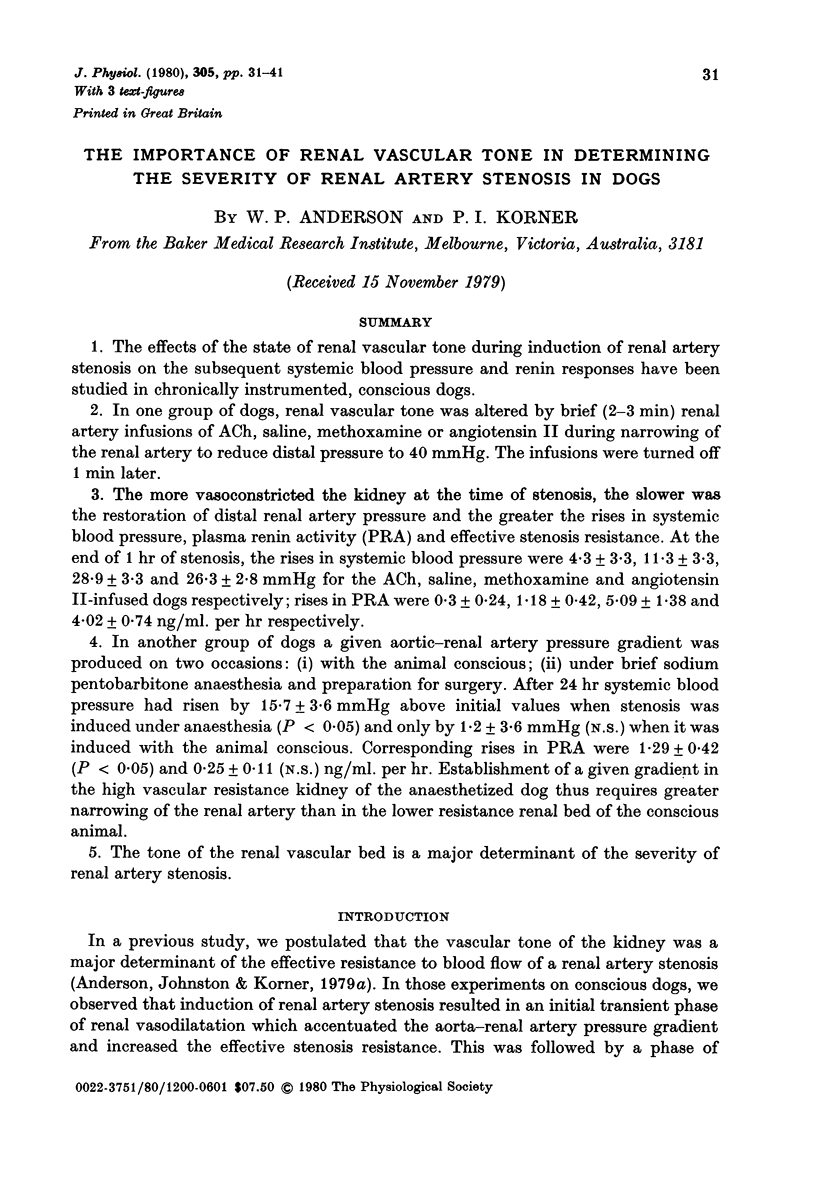
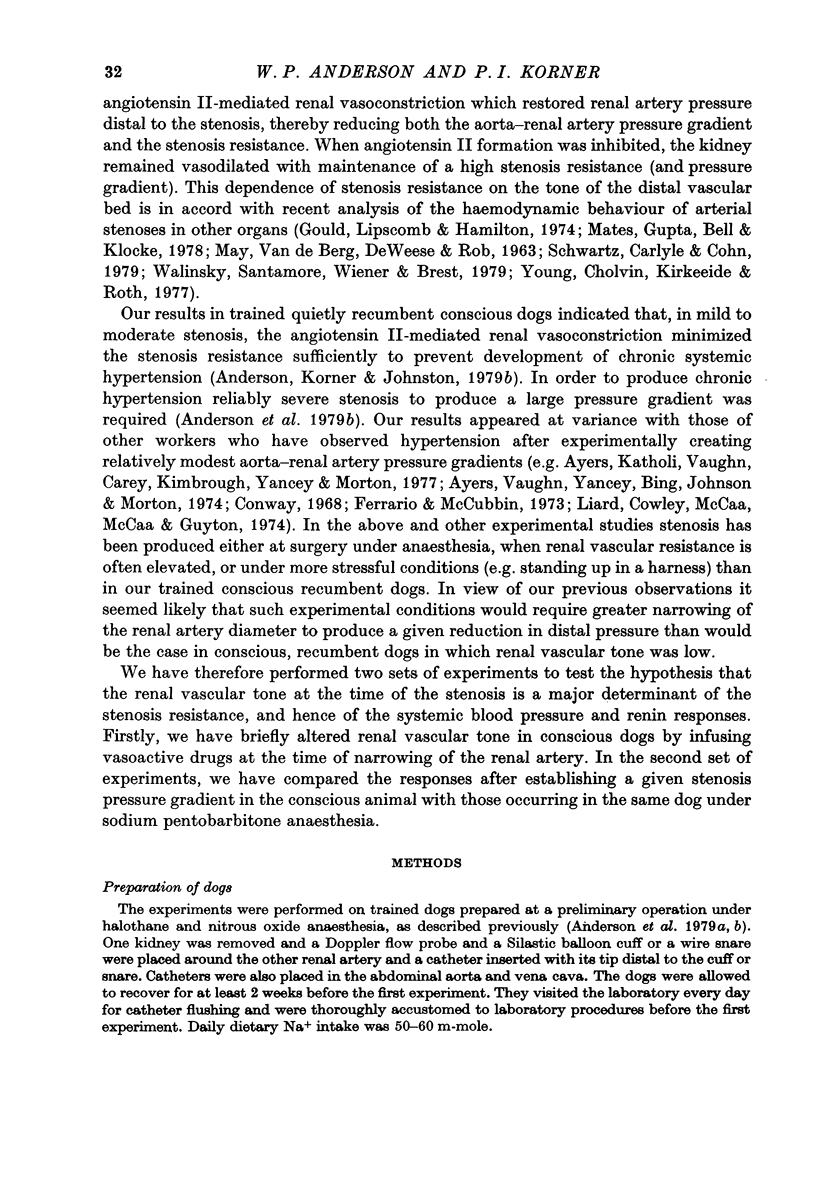
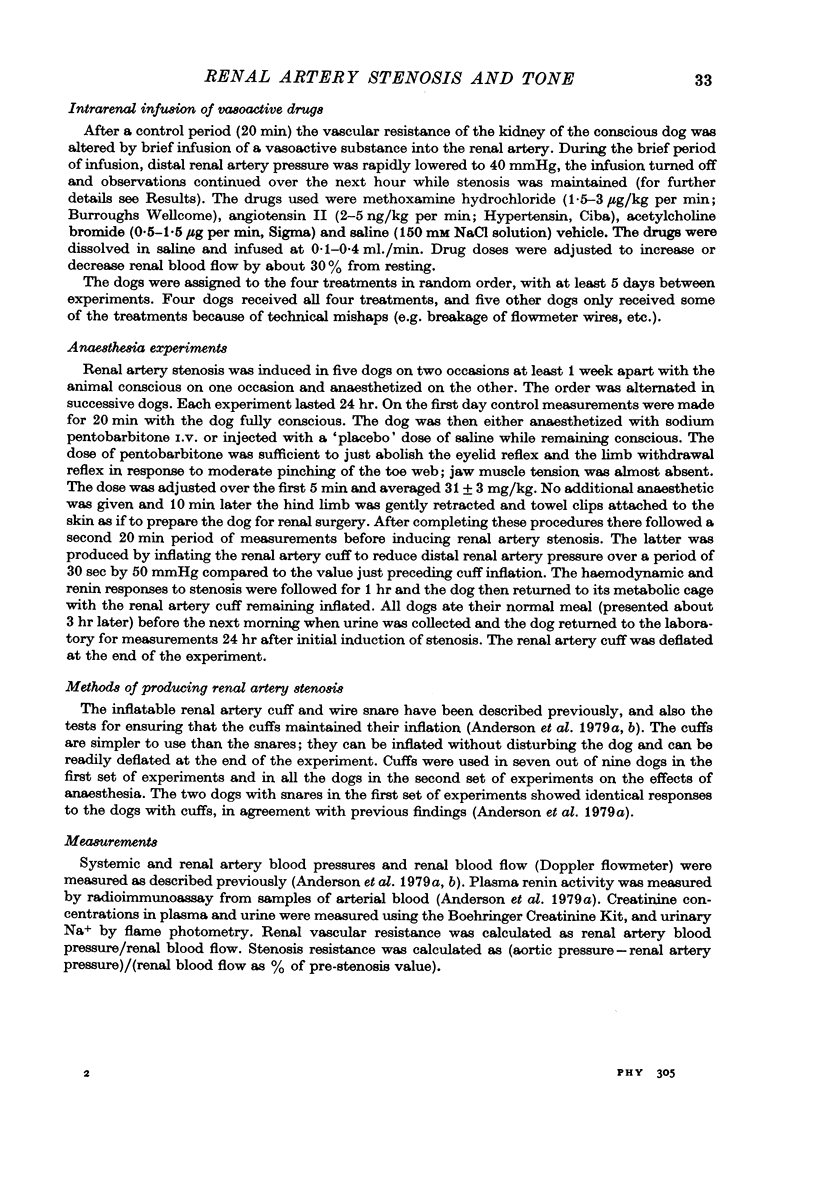
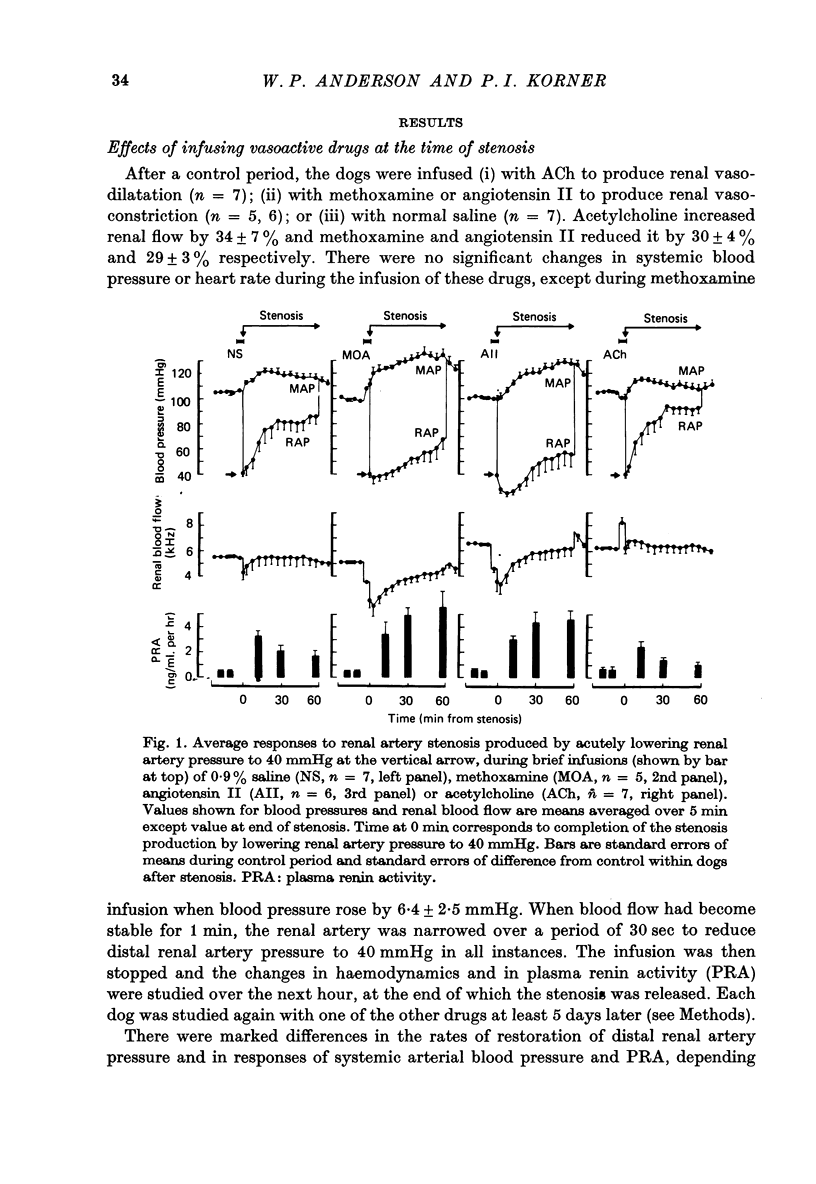
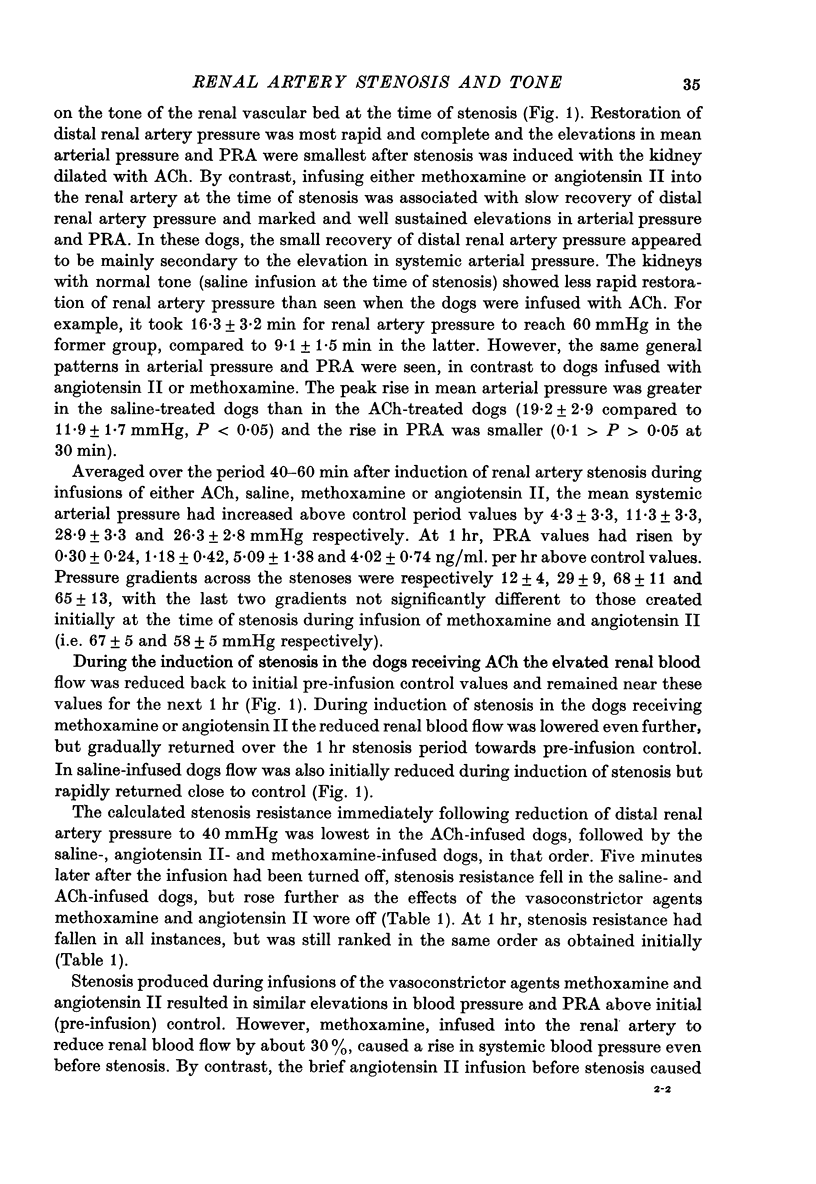
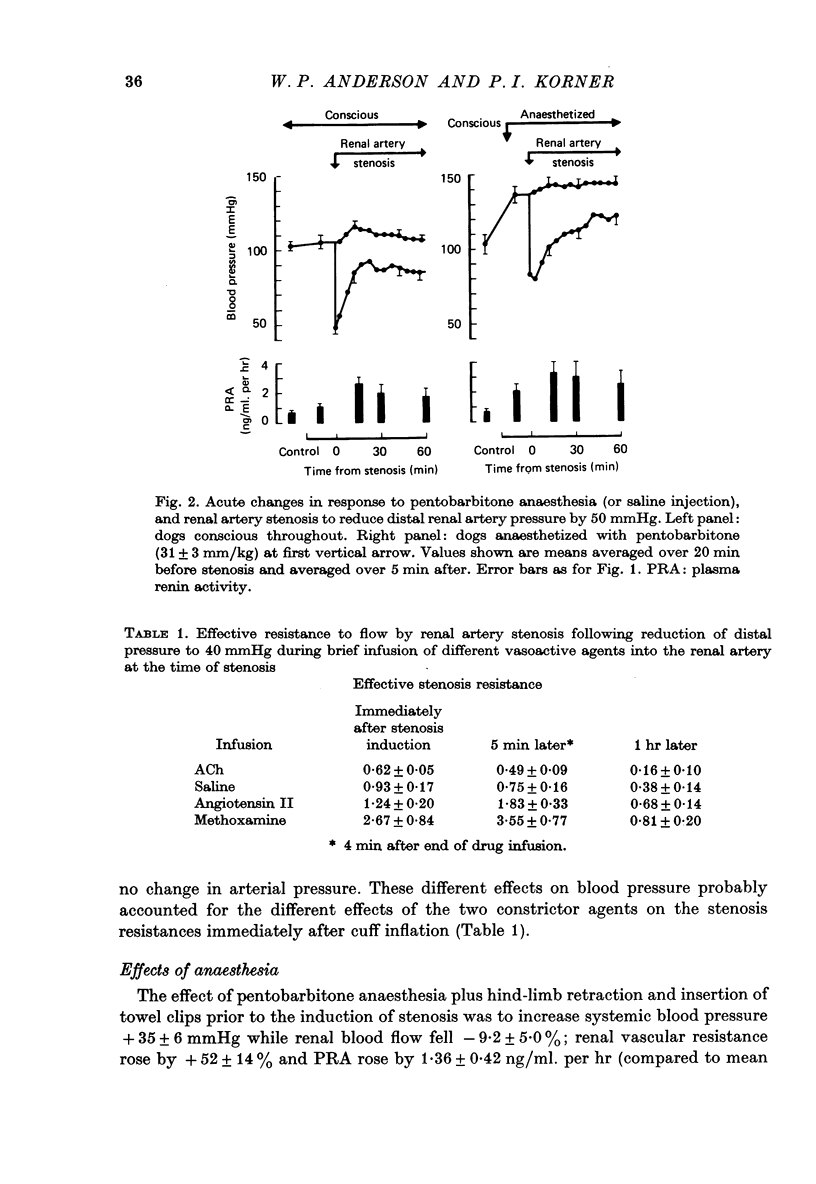
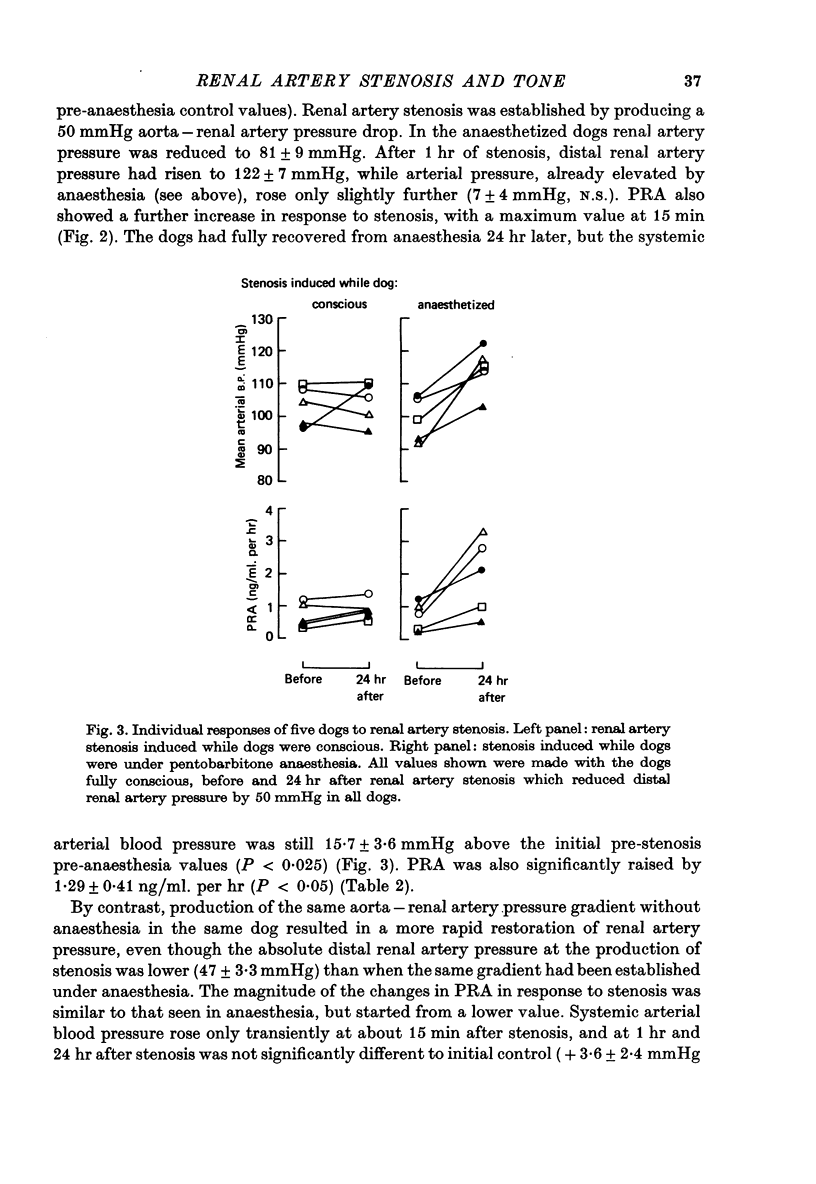
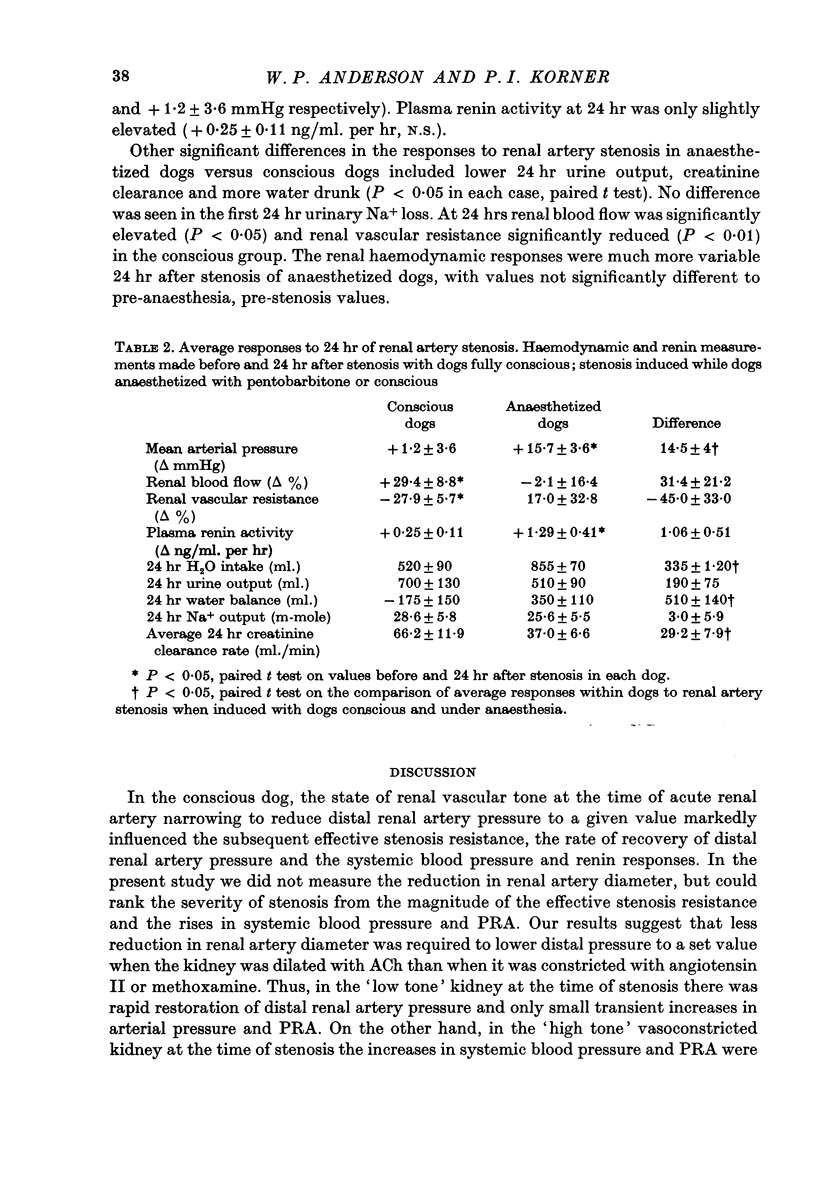

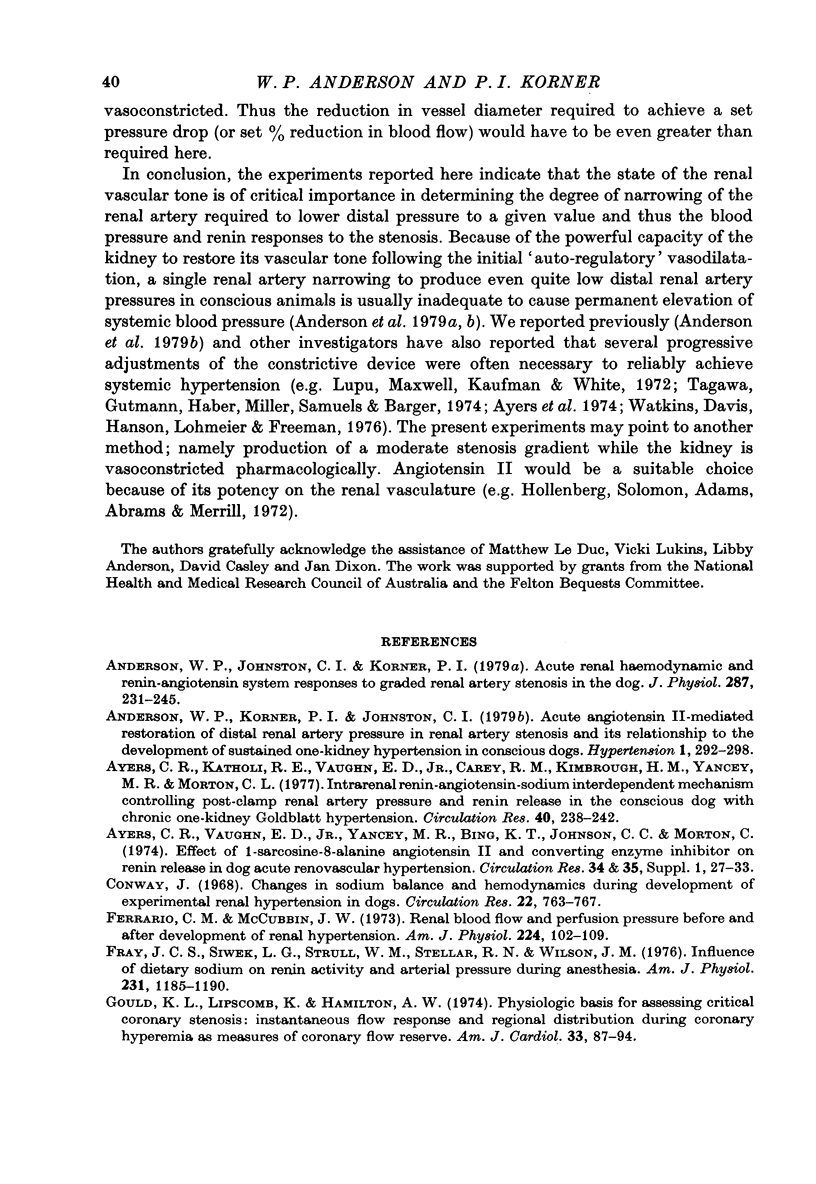

Selected References
These references are in PubMed. This may not be the complete list of references from this article.
- Anderson W. P., Johnston C. I., Korner P. I. Acute renal haemodynamic and renin-angiotensin system responses to graded renal artery stenosis in the dog. J Physiol. 1979 Feb;287:231–245. doi: 10.1113/jphysiol.1979.sp012656. [DOI] [PMC free article] [PubMed] [Google Scholar]
- Anderson W. P., Korner P. I., Johnston C. I. Acute angiotensin II-mediated restoration of distal renal artery pressure in renal artery stenosis and its relationship to the development of sustained one-kidney hypertension in conscious dogs. Hypertension. 1979 May-Jun;1(3):292–298. doi: 10.1161/01.hyp.1.3.292. [DOI] [PubMed] [Google Scholar]
- Ayers C. R., Katholi R. E., Vaughan E. D., Jr, Carey R. M., Kimbrough H. M., Jr, Yancey M. R., Morton C. L. Intrarenal renin-angiotensin-sodium interdependent mechanism controlling postclamp renal artery pressure and renin release in the conscious dog with chronic one-kidney Goldblatt hypertension. Circ Res. 1977 Mar;40(3):238–242. doi: 10.1161/01.res.40.3.238. [DOI] [PubMed] [Google Scholar]
- Conway J. Changes in sodium balance and hemodynamics during development of experimental renal hypertension in dogs. Circ Res. 1968 Jun;22(6):763–767. doi: 10.1161/01.res.22.6.763. [DOI] [PubMed] [Google Scholar]
- Ferrario C. M., McCubbin J. W. Renal blood flow and perfusion pressure before and after development of renal hypertension. Am J Physiol. 1973 Jan;224(1):102–109. doi: 10.1152/ajplegacy.1973.224.1.102. [DOI] [PubMed] [Google Scholar]
- Fray J. C., Siwek L. G., Strull W. M., Steller R. N., Wilson J. M. Influence of dietary sodium on renin activity and arterial pressure during anesthesia. Am J Physiol. 1976 Oct;231(4):1185–1190. doi: 10.1152/ajplegacy.1976.231.4.1185. [DOI] [PubMed] [Google Scholar]
- Gould K. L., Lipscomb K., Hamilton G. W. Physiologic basis for assessing critical coronary stenosis. Instantaneous flow response and regional distribution during coronary hyperemia as measures of coronary flow reserve. Am J Cardiol. 1974 Jan;33(1):87–94. doi: 10.1016/0002-9149(74)90743-7. [DOI] [PubMed] [Google Scholar]
- Hollenberg N. K., Solomon H. S., Adams D. F., Abrams H. L., Merrill J. P. Renal vascular responses to angiotensin and norepinephrine in normal man. Effect of sodium intake. Circ Res. 1972 Nov;31(5):750–757. doi: 10.1161/01.res.31.5.750. [DOI] [PubMed] [Google Scholar]
- Liard J. F., Cowley A. W., Jr, McCaa R. E., McCaa C. S., Guyton A. C. Renin, aldosterone, body fluid volumes, and the baroreceptor reflex in the development and reversal of Goldblatt hypertension in conscious dogs. Circ Res. 1974 Apr;34(4):549–560. doi: 10.1161/01.res.34.4.549. [DOI] [PubMed] [Google Scholar]
- Lupu A. N., Maxwell M. H., Kaufman J. J., White F. N. Experimental unilateral renal artery constriction in the dog. Circ Res. 1972 May;30(5):567–574. doi: 10.1161/01.res.30.5.567. [DOI] [PubMed] [Google Scholar]
- MAY A. G., VAN DE BERG L., DEWEESE J. A., ROB C. G. Critical arterial stenosis. Surgery. 1963 Jul;54:250–259. [PubMed] [Google Scholar]
- Mates R. E., Gupta R. L., Bell A. C., Klocke F. J. Fluid dynamics of coronary artery stenosis. Circ Res. 1978 Jan;42(1):152–162. doi: 10.1161/01.res.42.1.152. [DOI] [PubMed] [Google Scholar]
- Oparil S., Bailie M. D. Mechanism of renal handling of angiotensin II in the dog. Circ Res. 1973 Nov;33(5):500–507. doi: 10.1161/01.res.33.5.500. [DOI] [PubMed] [Google Scholar]
- Schwartz J. S., Carlyle P. F., Cohn J. N. Effect of dilation of the distal coronary bed on flow and resistance in severely stenotic coronary arteries in the dog. Am J Cardiol. 1979 Feb;43(2):219–224. doi: 10.1016/s0002-9149(79)80007-7. [DOI] [PubMed] [Google Scholar]
- Tagawa H., Gutmann F. D., Haber E., Miller E. D., Jr, Samuels A. I., Barger A. C. Reversible renovascular hypertension and renal arterial pressure. Proc Soc Exp Biol Med. 1974 Sep;146(4):975–982. doi: 10.3181/00379727-146-38231. [DOI] [PubMed] [Google Scholar]
- Walinsky P., Santamore W. P., Wiener L., Brest A. N. Dynamic changes in the haemodynamic severity of coronary artery stenosis in a canine model. Cardiovasc Res. 1979 Feb;13(2):113–118. doi: 10.1093/cvr/13.2.113. [DOI] [PubMed] [Google Scholar]
- Watkins B. E., Davis J. O., Hanson R. C., Lohmeier T. E., Freeman R. H. Incidence and pathophysiological changes in chronic two-kidney hypertension in the dog. Am J Physiol. 1976 Sep;231(3):954–960. doi: 10.1152/ajplegacy.1976.231.3.954. [DOI] [PubMed] [Google Scholar]
- Young D. F., Cholvin N. R., Kirkeeide R. L., Roth A. C. Hemodynamics of arterial stenoses at elevated flow rates. Circ Res. 1977 Jul;41(1):99–107. doi: 10.1161/01.res.41.1.99. [DOI] [PubMed] [Google Scholar]


